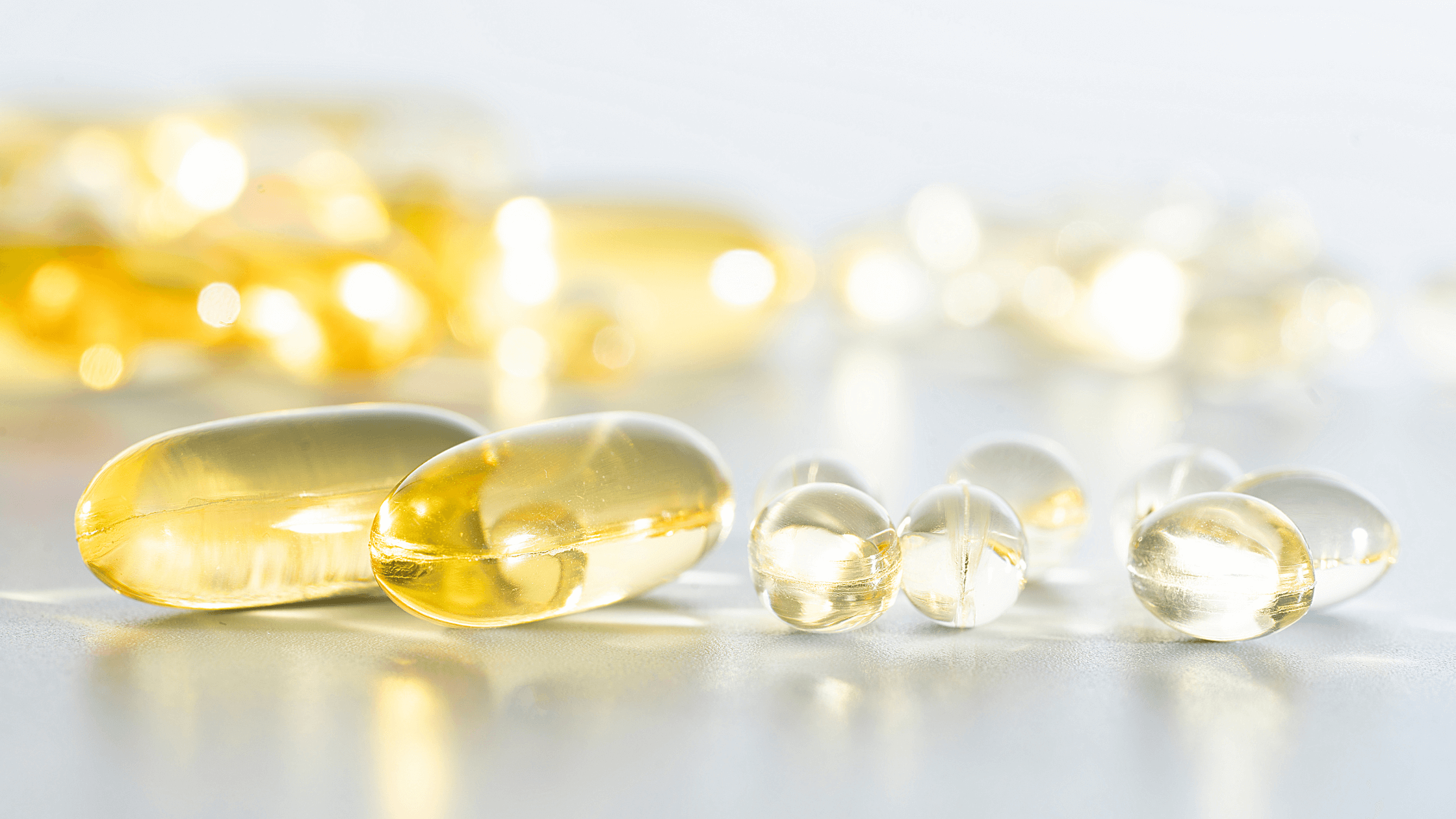Itchy, red, and irritated skin is a common challenge for those working in construction, especially with exposure to harsh weather and rough materials on-site. While these symptoms are often triggered by environmental factors, a lack of essential nutrients—especially omega-3 fatty acids—might be a hidden cause. Adding omega-3s to your diet could be a powerful tool for strengthening your skin against environmental damage and managing dry skin symptoms.
Quick look
- Omega-3s—mainly EPA and DHA—play a key role in skin health, yet over two-thirds of U.S. adults and 95% of children don’t get enough.
- Harsh weather, protective gear, and chemical exposure dry out skin, while dehydration and nutrient deficiencies further weaken it.
- Boosting omega-3 intake helps reduce inflammation, strengthens the skin barrier, protects against UV rays, and reinforces skin against environmental damage.
- Add omega-3s to your diet through fatty fish, plant-based sources, and supplements to maintain healthier, more resilient skin on the job.
The facts on omega-3 fatty acids

Omega-3 fatty acids are essential fats with powerful health benefits, especially for people working in high-stress, physically demanding environments like construction, engineering, or architecture. These fatty acids are primarily found in certain plant oils and fish, with key types including alpha-linolenic acid (ALA), eicosapentaenoic acid (EPA), and docosahexaenoic acid (DHA). Each type serves specific functions in the body, but EPA and DHA, in particular, are the most powerful for helping to heal the skin.
Unfortunately, most people in the U.S. consume far below the recommended levels of these fats. For instance, a report revealed that over two-thirds of U.S. adults and 95% of children have insufficient blood levels of EPA, DHA, and other omega-3s. Studies show that a deficiency in omega-3s can lead to dry, scaly skin—a symptom of essential fatty acid deficiency. For construction professionals, this lack of omega-3s can leave skin more vulnerable, especially when protective gear and environmental exposure add to the daily wear and tear.
What causes dry and irritated skin?
While environmental exposure is a common factor in dry and irritated skin, several other issues might be involved. Before making changes, it’s important to evaluate all of these factors and determine which ones are more likely to contribute to dry skin.
External factors
- Harsh weather conditions: Working outdoors in cold, windy, or low-humidity environments can strip moisture from the skin. These conditions pull water from the outer layer of the skin, leaving it dry and vulnerable.
- Protective gear: While essential for safety, gear like gloves, helmets, and masks can trap sweat and create friction. This repetitive rubbing can irritate the skin, weakening its natural barrier and making it more susceptible to dryness.
- Heat sources: Central heating, wood-burning stoves, and space heaters reduce humidity levels, which can dry out the air and, consequently, your skin.
- Frequent bathing or scrubbing: Taking long, hot showers or scrubbing the skin excessively removes natural oils that help retain moisture. Bathing more than once daily can worsen dryness by washing away the skin’s protective oils.
- Harsh soaps and detergents: Many popular soaps, shampoos, and detergents strip the skin of moisture because they’re formulated to remove oil. Using these products regularly can leave the skin dry and irritated.
- Chemical contact: Construction professionals who work with cement, adhesives, or other harsh materials are at a higher risk of developing dry skin. These substances can erode the skin’s natural barrier, leading to water loss and increased sensitivity.
Internal factors
- Nutritional deficiencies: A lack of essential nutrients, particularly omega-3 fatty acids, weakens the skin’s resilience.
- Dehydration: When the body doesn’t get enough water, the skin loses moisture, leading to a tight, uncomfortable feeling. This is especially important for people working in labor-intensive environments where hydration is key.
- Aging: As we age, the skin produces less oil, reducing its ability to retain moisture. For professionals over 40, this natural oil reduction can make dry skin a recurring problem.
- Medical treatments and conditions: Certain treatments, like cancer therapy or dialysis, and health conditions, including hypothyroidism and diabetes, can cause dry skin.
How adding more omega-3s to your diet can help your skin

For construction professionals who face constant exposure to harsh environments, omega-3 fatty acids offer a variety of skin benefits that can make a noticeable difference. Here’s how these essential fats help protect and heal your skin.
1. Reduce redness and inflammation
Several studies show that EPA and DHA, the primary omega-3s found in fish, are critical in reducing inflammation. They help build cell membranes, making the skin less susceptible to issues like redness and dryness that can be aggravated by cold weather and contact with abrasive materials. In addition, increased membrane content of EPA and DHA helps produce compounds called resolvins. Resolvins are the messengers that help calm inflammation and actively support the body’s healing and recovery process.
2. Enhance skin barrier
The skin is your body’s largest organ, constantly exposed to various environmental stressors. Omega-3s strengthen the skin’s natural barrier, which keeps moisture and harmful elements out. A stronger barrier means your skin is better protected from external damage and irritation.
3. Protect against UV rays
For those who spend long hours in the sun, omega-3s offer another advantage: they help protect the skin from UV damage. While they’re no substitute for sunscreen, these fatty acids support the skin’s natural defenses against UV rays, which is particularly valuable for people who work outside and are exposed to sunlight regularly.
4. Strengthen skin against environmental damage
Construction sites expose workers to dust, chemicals, and harsh weather. Omega-3s strengthen the skin’s structure, helping it withstand environmental damage. This reinforcement can make a noticeable difference, especially for those who handle materials that can be abrasive or irritate the skin. Adding more omega-3s to your diet gives your skin the tools it needs to recover faster from exposure to harsh conditions.
5. Promote wound healing and tissue repair
Construction professionals are no strangers to scrapes, cuts, and abrasions. Omega-3s play an important role in wound healing by enhancing collagen production—an essential protein in skin structure and healing. Studies indicate that omega-3s support faster healing and may even reduce the risk of scarring by promoting smoother skin regeneration.
6. Regulate oil production
While omega-3s are often highlighted for their anti-inflammatory properties, they also play a role in balancing oil production in the skin. This can benefit those with oily or combination skin types, as omega-3s help regulate sebum production. By balancing oil levels, omega-3s keep the skin hydrated without clogging pores, reducing the risk of breakouts resulting from working in dirty or humid conditions.
7. Support skin elasticity and firmness
Omega-3s contribute to maintaining skin elasticity and firmness by supporting the structural integrity of cell membranes. This is especially important for aging construction professionals, as maintaining skin elasticity can help combat the natural sagging and wrinkling that comes with age and repetitive sun exposure.
8. Reduce skin conditions like eczema and psoriasis
For construction workers prone to skin conditions like eczema or psoriasis, omega-3s can provide targeted benefits. These fatty acids have been shown to help manage flare-ups and reduce symptoms by minimizing inflammatory processes in the skin. This can offer relief for individuals who find that stress, environmental irritants, and even sweat exacerbate these conditions.
How to incorporate more omega-3s into your diet

Adding omega-3s to your diet can be done through food choices and supplements, each providing unique benefits for skin health and overall wellness. Here’s how you can boost your intake.
Food sources
Incorporating omega-3-rich foods into your meals enhances skin health and contributes to heart, brain, and joint health. Natural sources of omega-3s can be easily added to your daily routine.
- Eat fatty fish: Aim for at least two servings per week of fatty fish like salmon, mackerel, sardines, and herring. These fish are rich in EPA and DHA and offer other nutrients like vitamin D and selenium. Look for wild-caught fish and seafood whenever possible to avoid toxins.
- Add plant-based sources: Include foods like flaxseeds, chia seeds, walnuts, and hemp seeds. These are high in ALA, a type of omega-3 fatty acid. Add ground flaxseeds or chia seeds to cereals, smoothies, or salads.
- Use omega-3-rich oils: Flaxseed oil is a great substitute in meals when used raw but has a low smoke point, making it unsuitable for cooking. It’s a good source of ALA and can easily be added to salad dressings, smoothies, or drizzled over cooked vegetables.
- Look for fortified foods: Some products, such as certain brands of eggs, yogurt, juices, milk, and soy beverages, are fortified with omega-3s. Check labels to find these options and incorporate them into your diet as convenient sources of omega-3s.
Supplements
Supplements offer a reliable and concentrated source of omega-3 for those who find it challenging to meet their needs through diet alone. They are especially beneficial for people with higher omega-3 requirements or dietary restrictions. However, consult with a healthcare provider prior to taking any supplement, especially if you have underlying health conditions.
- Fish oil: One of the most common sources of omega-3s, providing EPA and DHA. Standard doses range from 1,000 mg to 2,000 mg per day.
- Krill oil: Contains omega-3s in a form that some research suggests may be more easily absorbed by the body. Krill oil often has fewer side effects than fish oil, such as a reduced likelihood of a “fishy” aftertaste.
- Algal oil: A vegetarian and vegan-friendly option derived from algae, which provides DHA and lower amounts of EPA. Algal oil is a good alternative for those who avoid fish but still want a reliable source of omega-3s.
- Cod liver oil: A source of omega-3s that also contains vitamins A and D. Be mindful of vitamin A intake, as it can reach toxic levels if consumed in large amounts.
- Flaxseed oil: Rich in ALA, it’s a good plant-based option for those looking to increase omega-3 intake without consuming fish. It’s not as effective for raising EPA and DHA levels, but it’s beneficial for those who prefer plant-based sources.
Bottom line
Omega-3s play a powerful role in maintaining healthy, resilient skin—especially for those exposed to harsh environments or daily physical demands. Whether you’re looking to reduce redness, strengthen your skin barrier, or protect against environmental stressors, incorporating more omega-3s can make a noticeable difference. By prioritizing omega-3s in your diet or supplement routine, you’re investing in long-term skin health.
For more health insights and tips, subscribe to our weekly newsletter and stay updated on the latest in wellness and nutrition for construction professionals.



2 comments